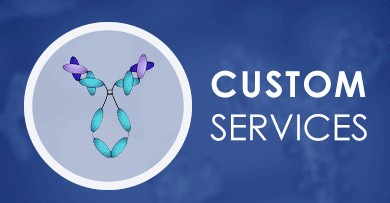+ Filter
 Loading...
Loading...

HOXA9
 Loading...
Loading...Anti-HOXA9 Products
-
- Derivation: Mouse
- Species Reactivity: Human, Mouse
- Type: Mouse IgG1
- Application: WB, ICC, FC
-
- Species Reactivity: Human
- Type: Mouse antibody
- Application: ELISA, WB
-
- Derivation: Phage display library
- Species Reactivity: Human
- Type: Rabbit IgG
- Application: WB, FC
- Mouse Anti-HOXA9 Recombinant Antibody (clone 1A12C1) (VS7-0425-WR78)
-
- Species Reactivity: Human
- Type: Mouse IgG1
- Application: ICC, FC
- Mouse Anti-HOXA9 Recombinant Antibody (clone 5C7C6) (VS7-0425-WR79)
-
- Species Reactivity: Human
- Type: Mouse IgG2a
- Application: ICC, FC
- Anti-HOXA9 Immunohistochemistry Kit (VS-0525-XY3254)
-
- Species Reactivity: Human
- Target: HOXA9
- Application: IHC
View More Products
Can't find the products you're looking for? Try to filter in the left sidebar.Filter By Tag
More Infomation
Our customer service representatives are available 24 hours a day, from Monday to Sunday. Contact Us
For Research Use Only. Not For Clinical Use.
Background
In vertebrates, the genes encoding the class of transcription factors called homeobox genes are found in clusters named A, B, C, and D on four separate chromosomes. Expression of these proteins is spatially and temporally regulated during embryonic development. This gene is part of the A cluster on chromosome 7 and encodes a DNA-binding transcription factor which may regulate gene expression, morphogenesis, and differentiation. This gene is highly similar to the abdominal-B (Abd-B) gene of Drosophila. A specific translocation event which causes a fusion between this gene and the NUP98 gene has been associated with myeloid leukemogenesis. Read-through transcription exists between this gene and the upstream homeobox A10 (HOXA10) gene.[provided by RefSeq, Mar 2011]
Protein class
Cancer-related genes, Disease related genes, Plasma proteins, Transcription factors
Predicted location
Intracellular
Single cell type specificity
Cell type enhanced (Proximal tubular cells, Distal tubular cells, Enteroendocrine cells, Endometrial stromal cells, Suprabasal keratinocytes)
Immune cell specificity
Group enriched (NK-cell, basophil, myeloid DC)
Cell line specificity
Cell line enhanced (HEK93, PC-3, RPTEC TERT1, SCLC-21H, U-937)
Interaction
Transiently interacts with PRMT5 in TNF-alpha stimulated endothelial cells.
Molecular function
Developmental protein, DNA-binding
More Types Infomation

